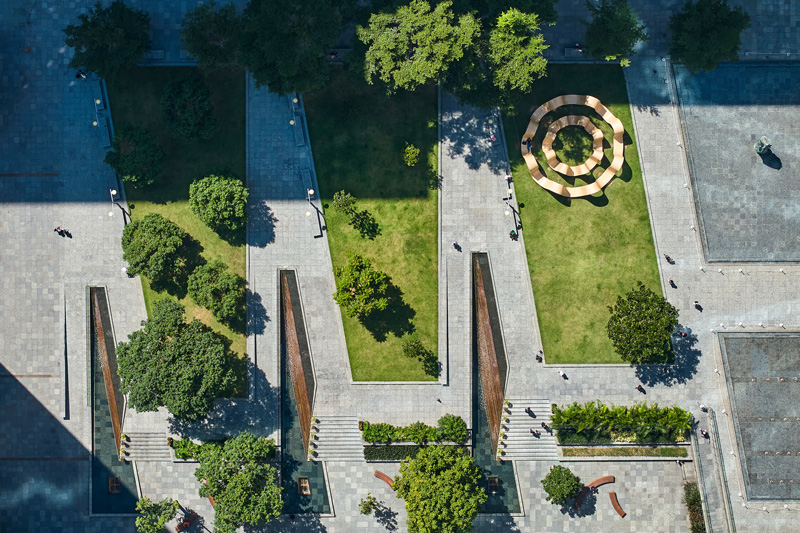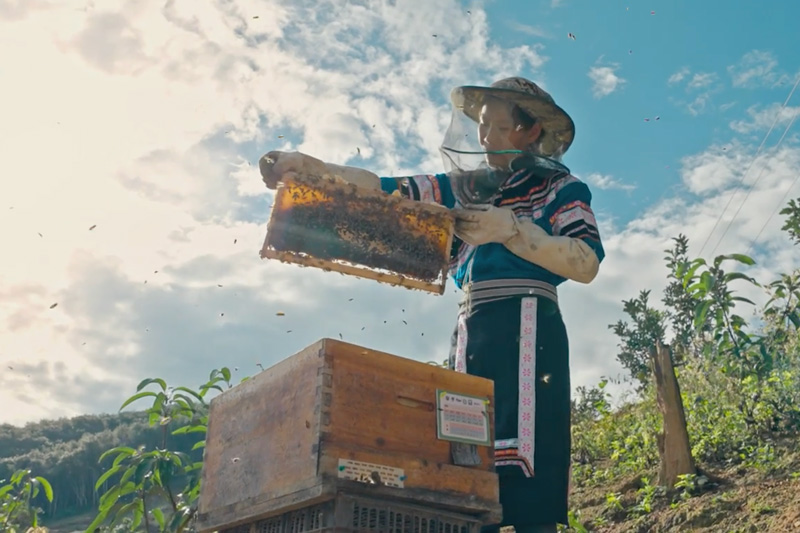Swire Properties is an Early Adopter of TNFD, and one of 40 TNFD Global Taskforce Members. The company is also involved in the initiative’s Infrastructure and Real Estate Working Group and the Supply Chain Working Group, helping to formulate the overall framework and contribute to collective nature-positive goals. As part of the Taskforce it was one of only three Hong Kong companies to pilot the TNFD beta framework and was featured as a WBCSD TNFD pilot use case, sharing its approach to driving positive impacts by incorporating nature-inclusive designs in its buildings.
Swire Properties has conducted a screening of its global portfolio using biodiversity indicators to define a priority list and nature profile, and explore its business impact and dependencies on nature. The priority sites identified were primarily located in the South China-Vietnam subtropical evergreen forests, Xi Yang freshwater ecoregion, and Southern China freshwater region. Additionally, a list of high-impact commodities, including cement, sand, timber, steel, livestock, and seafood, was compiled based on the Science Based Targets Network’s High Impact Commodities List and the UNEP-WCMC sectorial materiality tool.
In 2024, Swire Properties began piloting the LEAP approach at a new development in Xi’an, focusing on concrete and steel to understand their environmental interface. This study involved two key suppliers for concrete and one for steel, evaluating 31 raw material extraction and manufacturing sites. The assessment revealed that the value chain for these materials is concentrated in the Huang He Plain mixed forests, Central China Loess Plateau mixed forests, and the Lower Huanghe freshwater ecoregion. The analysis identified impacts and dependencies of the concrete and steel supply chains. The concrete supply chain relies on water provisioning and climate regulation, while the steel supply chain depends on water throughout the steelmaking process. Both supply chains were found to impact nature through changes in terrestrial ecosystems, water use, and emissions, including greenhouse gases and particulates, affecting air and water quality.
Swire Properties has guidelines to integrate biodiversity considerations into new developments and existing portfolios. These include examples and checklists that will help project teams and management offices with ways to enhance biodiversity in its properties and new projects. It enacted several transformational strategies to reach its 2030 SBTs, including adopting nature-based solutions that capture carbon emissions, benefit local communities and improve biodiversity. In support of this, an urban biodiversity study was carried out in partnership with a professor at the University of Hong Kong for its Taikoo Place redevelopment project.
Moving forward, findings will be integrated into future planning and operations across Swire Properties’ Hong Kong portfolio. They will also inform the uses of the Biodiversity Guidelines to define the importance of, and the company’s approach to, protecting biodiversity across its developments. Further, Swire Properties aims to engage with suppliers located near sensitive areas and enhance its procurement guidelines and supply chain ESG assessments. It plans to develop a Nature Transition Plan to establish a roadmap for its contributions to a nature-positive transition.
Swire Coca-Cola collaborates with The Coca-Cola Company (TCCC) on community and watershed protection projects to replenish water in the Chinese Mainland. TCCC has a target to replenish water of a volume equivalent to the volume of products it sells globally. All of Swire Coca-Cola’s bottling plants comply with local water quality regulations and meet the wastewater quality standards of TCCC and the World Health Organisation.
In 2022, Swire Pacific took ownership of a REDD+ project previously established by Swire Pacific Offshore. Further information is available in the Climate section.
Further information is available in the sustainability reports of our operating companies. Swire Properties has begun disclosing core TNFD metrics in their Sustainability Report 2024. Swire Coca-Cola reports metrics related to climate, water, and plastics use. Additionally, metrics on climate, water, and waste can be found in Performance data.


